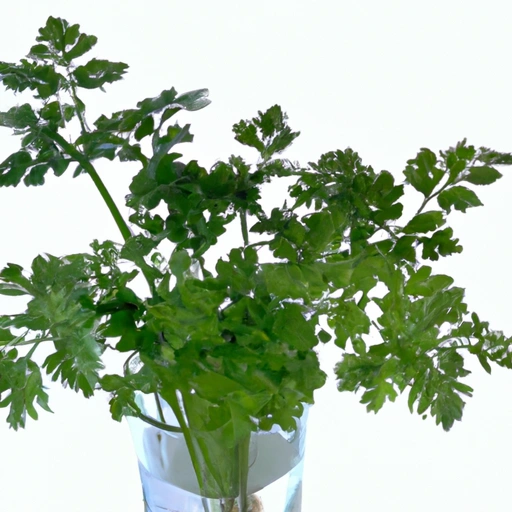Chervil
Description

Chervil, also known as French parsley or garden chervil, is a delicate annual herb known for its lacy, light green leaves and subtle flavor. It belongs to the Apiaceae family, which includes other well-known herbs and vegetables such as parsley, carrots, and dill. Chervil's mild taste is reminiscent of anise or licorice, with a hint of parsley, making it a favorite in the culinary world, especially in French cuisine.
Common uses
Chervil is commonly used to enhance the flavors of salads, soups, and egg dishes. Its delicate nature makes it a fine garnish for plating, adding both taste and visual appeal.
Nutritional value
Calories
Chervil is a low-calorie herb, with approximately 237 calories per 100 grams (3.5 oz).
Protein
The herb provides about 23 grams of protein per 100 grams (3.5 oz).
Fat
Chervil is low in fat, containing less than 4 grams per 100 grams (3.5 oz).
Carbohydrates
Carbohydrates in chervil amount to roughly 50 grams per 100 grams (3.5 oz).
Vitamins
Chervil is a good source of vitamins, particularly vitamin C, vitamin A, and some B vitamins.
Minerals
It contains a variety of minerals including iron, calcium, and magnesium.
Health benefits
Due to its vitamin and mineral content, chervil can contribute to overall health, including supporting immune function and vision, promoting bone health, and aiding in the regulation of blood pressure.
Potential risks
While chervil is generally safe to consume, it should be used in moderation due to its natural coumarins content, which can have anticoagulant effects. People taking blood-thinning medications should consult with a healthcare provider before incorporating it into their diet.
Common recipes
Chervil is often used in recipes like béarnaise sauce, chervil soup, and various French-style omelets and quiches.
Cooking methods
It is most commonly used fresh in culinary applications and is typically added at the end of cooking to preserve its delicate flavor which can be lost if overheated.
Pairing with other ingredients
Chervil pairs well with eggs, seafood, chicken, and spring vegetables like peas and carrots.
Summary
Chervil is a versatile herb with a rich history and a variety of culinary uses. Its gentle flavor and health benefits make it a valuable addition to any kitchen. Whether used fresh or dried, chervil can elevate the taste of many dishes without overpowering other ingredients.